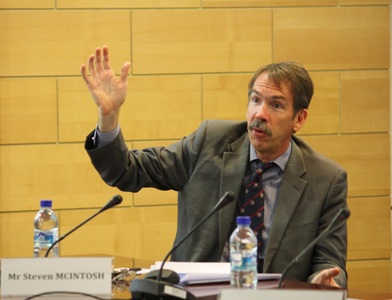Information
Venue
Start
End
Radioactive Sources: What Can Go Wrong?
Introduction

Radioactive sources are used extensively throughout the world for a wide range of beneficial purposes, particularly in medicine, industry, agricultural research and educational applications. The need to ensure the safety and security of these sources has been recognised for many years, and many member states of the International Atomic Energy Agency (IAEA) established regulatory infrastructures for that purpose. Even so, the occurrence of a number of serious accidents in the 1980s and 1990s led the international community to question the effectiveness of these controls. In response, the IAEA developed the Code of Conduct on the Safety and Security of Radioactive Sources in 2003, which now forms the basis of much national and international regulation of the use of radioactive sources. The Code was soon supplemented by the Guidance on the Import and Export of Radioactive Sources, which was updated in 2011. A process is currently underway for the development of Guidance on the Management of Disused Sources.
Together with the development of this international guidance documentation, on-the-ground efforts also strengthen the security of radioactive sources. These efforts include the Regional Radiological Security Partnership in Southeast Asia, which brought together regional states (including Australia), the United States and the IAEA to revise legislation and regulations, provide training to regulators and operators, and install enhanced security measures at particular facilities.
Presentation
Download Mr McIntosh’s presentation in PDF format.
About the Speaker
Mr Steven McIntosh is the senior manager of government and international affairs at the Australian Nuclear Science and Technology Organisation (ANSTO) and is the chair of the IAEA’s International Expert Group on Nuclear Liability (INLEX) which provides advice to the IAEA Director General. He chaired the Expert Group which developed the Code of Conduct on the Safety and Security of Radioactive Sources in 2000, and chaired subsequent negotiations dealing with the revision and implementation of the Code and its associated Guidance on the Import and Export of Radioactive Sources. He is also Australia’s National Representative to the Regional Co Operative Agreement for Research, Development and Training Related to Nuclear Science and Technology. He previously worked in the legal office at the Department of Foreign Affairs and Trade and at the Australian Permanent Mission in Vienna, where he represented Australia in discussion and negotiations on a wide range of nuclear and arms control issues.
Event e-Flyer
